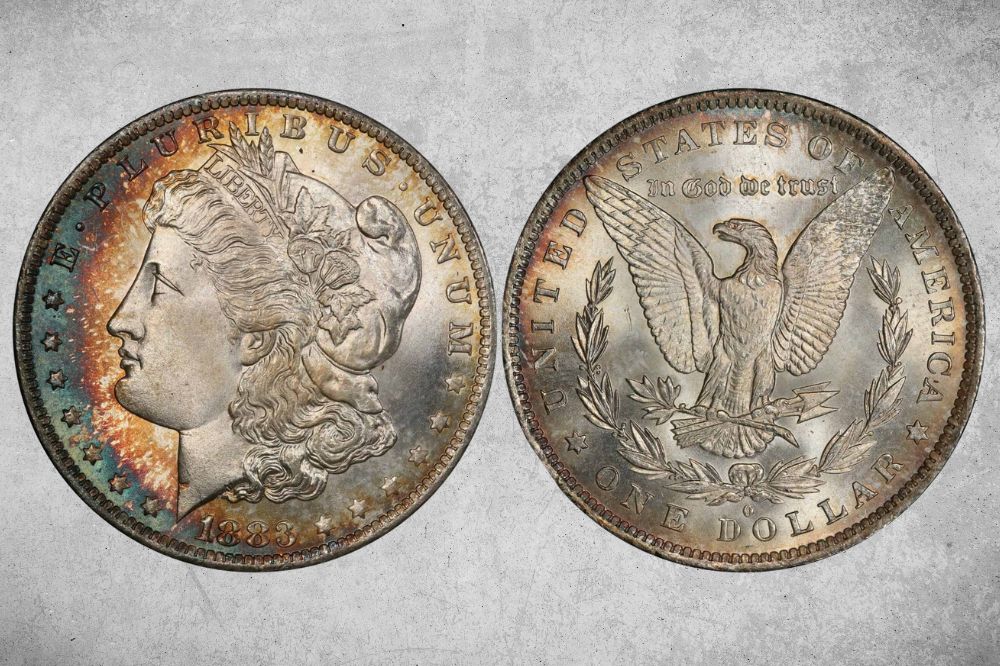Interested in finding out about the 1883 silver dollar value? You’ve come to the right place! Whether you’re new to collecting or an old hand, we have all the information you need.
We’re going to explore the different mint marks and varieties. We’ll learn about grading coins, and how condition affects price. And we’ll look at some of the interesting error coins that are out there.
So if you’re ready, let’s get started!
1883 Silver Dollar Details
- Category: Morgan dollars
- Mints: Philadelphia, New Orleans, San Francisco, Carson City
- Total mintage: 28,469,000
- Designer: George T. Morgan
- Design date: 1878
- Edge: Reeded
- Diameter: 38.1 millimeters (1.5 inches)
- Thickness: 2.9 millimeters (0.09 inches)
- Composition: 90% silver, 10% copper
- Weight: 26.73 grams
1883 Silver Dollar Value Chart |
||||
| Mint mark | Extremely fine | MS63 | MS65 | MS67 |
| 1883 (P) No Mint Mark Silver Dollar Value | $46 | $115
Prooflike: $200 Deep Mirror Prooflike: $400 |
$275
Prooflike: $675 Deep Mirror Prooflike: $1,500 |
$2,700 |
| 1883 O Silver Dollar Value | $46 | $96
Prooflike: $170 Deep Mirror Prooflike: $300 |
$265
Prooflike: $400 Deep Mirror Prooflike: $1,250 |
$3,600
Deep Mirror Prooflike: $5,000 |
| 1883 S Silver Dollar Value | $150 | $3,350
Prooflike: $9,150 |
$33,500
Prooflike: $55,000 |
$225,000
Prooflike: $350,000 |
| 1883 CC Silver Dollar Value | $235 | $450
Prooflike: $525 Deep Mirror Prooflike: $600 |
$625
Prooflike: $950 Deep Mirror Prooflike: $1,750 |
$5,250
Prooflike: $11,500 Deep Mirror Prooflike: $25,000 |
| PR50 | PR60 | PR65 | PR68 | |
| 1883 (P) No Mint Mark Proof Silver Dollar Value | $1,050 | $2,200
Cameo: $2,600 |
$7,000
Cameo: $9,500 |
$33,500
Cameo: $52,500 |
1883 Silver Dollar Values and Varieties Guides
1883 (P) No Mint Mark Silver Dollar Value
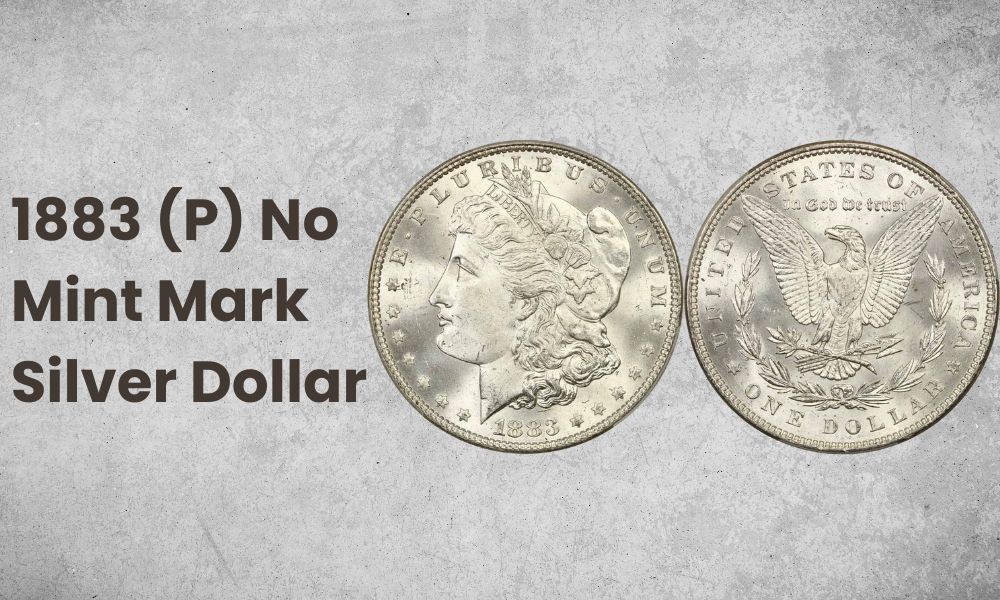
- Type: Morgan dollar
- Edge: Reeded
- Mint mark: None
- Place of minting: Philadelphia
- Year of minting: 1883
- Face value: $1
- $ price: $32 to $56,500
- Quantity produced: 12,290,000
- Designer: George T. Morgan
Four Mint facilities produced silver dollars in 1883, but Philadelphia produced more than anywhere else. Over 12 million coins were struck there, accounting for almost half the total mintage.
To check where your coin was minted, look at the reverse, just above the “D” and “O” of “DOLLAR”. If there’s a small letter there, that’s a mintmark. But if the area is blank, the coin comes from Philadelphia.
12 million is a lot of coins, but millions of silver dollars were melted down later. And it’s estimated that only one in ten survives today.
Exactly how much an 1883 silver dollar from Philadelphia is worth depends on its condition. That’s graded from 1 to 70. 1 is the poorest and 70 is flawless.
Generally speaking, the better the condition, the higher the value. However, coins in the poorest condition but still identifiable – graded 1 or 2 – can be worth a little more.
An 1883 Philadelphia silver dollar graded 1 is valued by the independent coin graders the PCGS at $60. Go up a grade point, and that increases to $70. But go up another grade and the value drops to $32.
After that, values increase steadily. A dollar graded extremely fine (XF45) is worth $46. But if you’re looking for a coin in uncirculated condition – known as “mint state” – you’ll need to pay more.
Mint state coins are graded from 60 to 70. An 1883 Philadelphia silver dollar graded MS60 is valued at $72. That increases to $275 for a “gem” quality coin graded MS65.
The finest known example is a single coin graded MS68+. That last sold at auction in 2015 for a shade under $50,000. Today, the PCGS values it at $56,500.
Some silver dollars are designated “prooflike” or “deep mirror prooflike”. These designations, abbreviated to PL and DMPL respectively, are used for well struck coins on high quality planchets. And they can add significantly to values.
Coins with these designations aren’t available at every grade. The finest known prooflike and deep mirror prooflike 1883 (P) silver dollars are graded MS66+.
The PCGS values prooflike examples at $4,250, compared to $750 for an undesignated coin at the same grade. The two deep mirror prooflike 1883 dollars known to exist are each valued at $28,500.
1883 O Silver Dollar Value
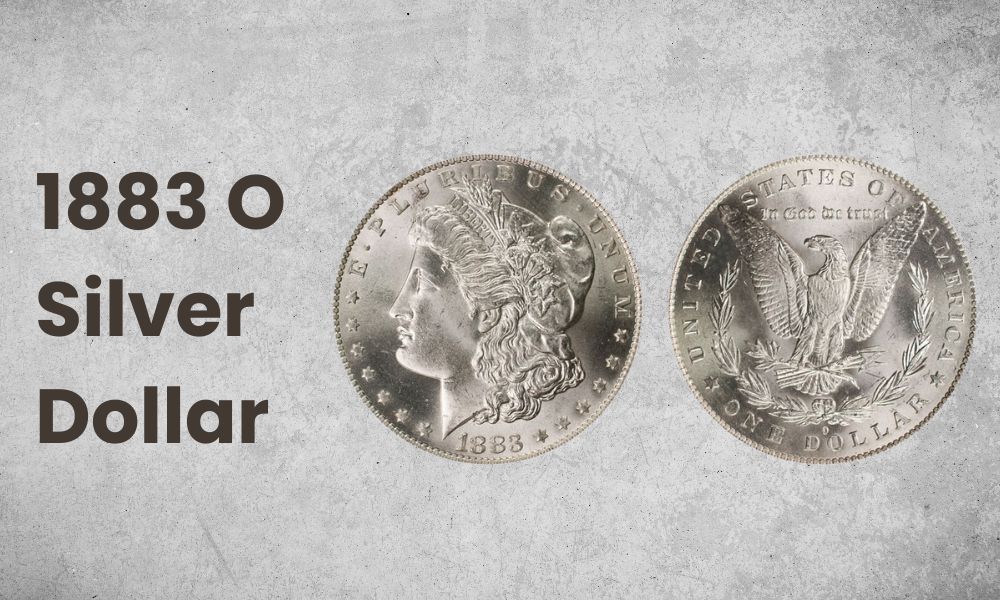
- Type: Morgan dollar
- Edge: Reeded
- Mint mark: O
- Place of minting: New Orleans
- Year of minting: 1883
- Face value: $1
- $ price: $32 to $65,000
- Quantity produced: 8,725,000
- Designer: George T. Morgan
Silver dollars minted in New Orleans can be identified by the small “O” that appears on the reverse.
Values start at $32 for coins graded 3 or 4. As with Philadelphia examples, dollars graded 1 or 2 are worth more, $60 and $70 respectively.
Values for uncirculated coins start at $72 for a coin graded MS60, rising to $265 at MS65. The finest known example without the prooflike or deep mirror prooflike designation is graded MS68. The PCGS has graded only one coin at that level, and values it at $65,000.
A look at estimated values and sale prices for deep mirror prooflike dollars shows how difficult it can be to predict what collectors will pay.
At the top end of the scale, a deep mirror prooflike coin graded MS66+ by the PCGS sold for $13,200 in 2019. The same grading agency values such a coin at $13,500 today.
But the finest example known to exist is a deep mirror prooflike coin graded MS67 by another respected grading agency, the NGC. Yet when that coin was sold at auction in April 2020, it made only $6,600.
Perhaps thinking they’d got a bargain, the new owner put it up for sale again just eight months later. But the price dropped further, with the coin selling for just $5,040.
The use of different dies means there are a large number of varieties of 1883 silver dollars. They can be identified by their VAM numbers, so named after Van Allen and Mallis, two numismatists who painstakingly cataloged their details.
Most varieties don’t add to a coin’s value – but some do. These are known as the “Top 100”. Only two varieties from 1883 make this list. But one of them is from New Orleans.
It’s known as the “O/O” or “dropped O”, and it’s coded VAM4. This variety is worth $125 at MS63, almost a quarter more than a standard New Orleans silver dollar from that year. And at MS66+, the premium increases to $100.
1883 S Silver Dollar Value
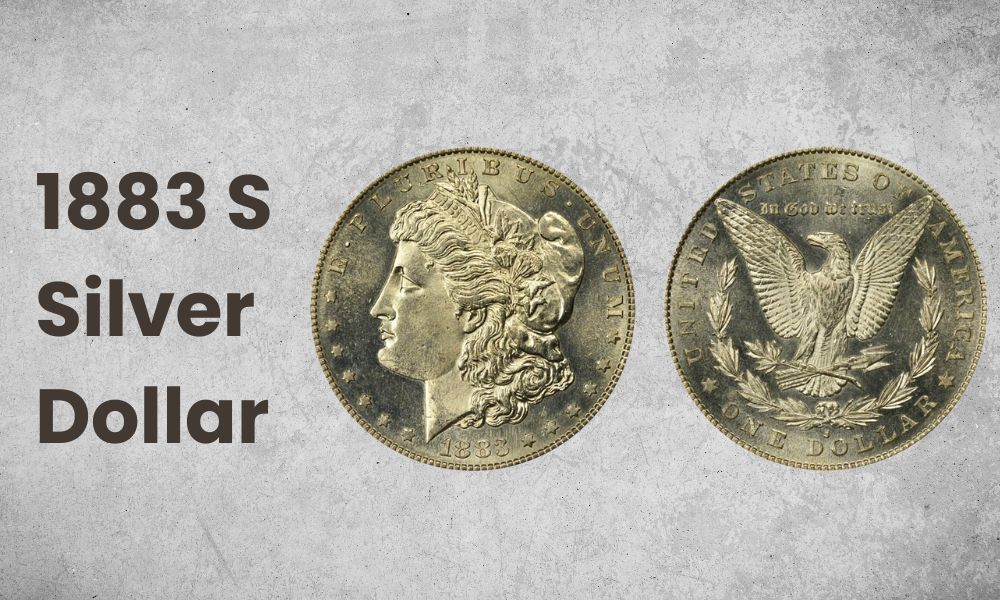
- Type: Morgan dollar
- Edge: Reeded
- Mint mark: S
- Place of minting: San Francisco
- Year of minting: 1883
- Face value: $1
- $ price: $37 to $450,000
- Quantity produced: 6,250,000
- Designer: George T. Morgan
You can identify an 1883 San Francisco silver dollar by the small “S” on the reverse, above the denomination.
San Francisco dollars graded 1 are particularly sought after, with a value of $185. That drops to $90 at 2, and $37 at 3, before climbing steadily again.
At MS64+ and above, values move into five figures and beyond. The highest graded mint state dollar without a prooflike or deep mirror prooflike designation is a single example at MS67. The PCGS values that at a hefty $225,000.
Deep mirror prooflike coins are known at only a handful of grades: MS58, MS61, MS62 and MS64. The sole MS64 DMPL dollar last sold at auction in 2009 for $92,000. Today, the PCGS places its value at $105,000.
The finest prooflike coin however, is graded significantly higher, at MS67+. And that’s valued at $450,000.
1883 CC Silver Dollar Value
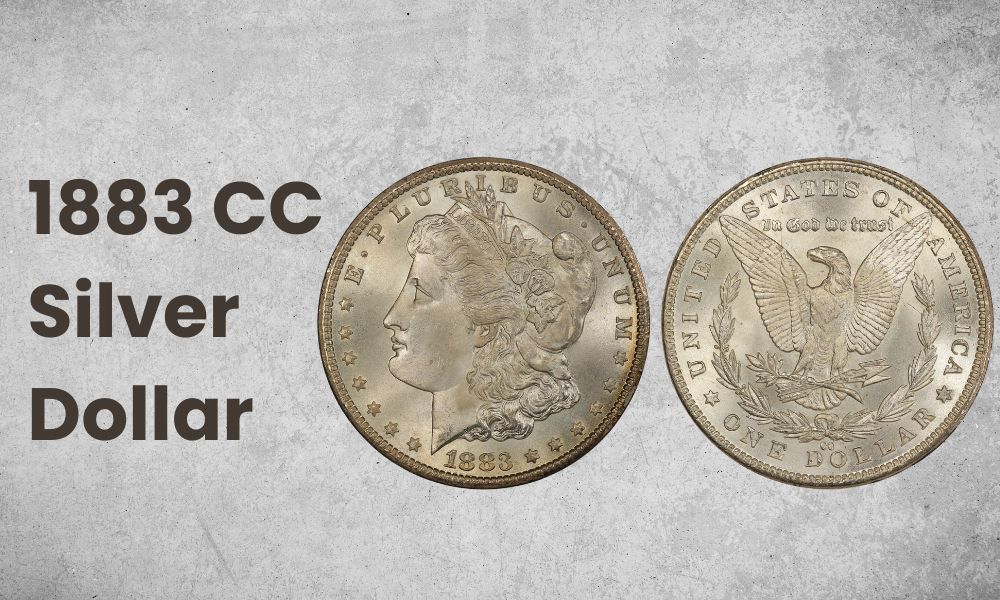
- Type: Morgan dollar
- Edge: Reeded
- Mint mark: CC
- Place of minting: Carson City
- Year of minting: 1883
- Face value: $1
- $ price: $100 to $72,500
- Quantity produced: 1,204,000
- Designer: George T. Morgan
There were considerable logistical challenges involved in minting coins at the frontier location of Carson City. This, together with the small mintages that resulted, makes coins with the “CC” mint mark enduring favorites among collectors.
Values start at $100 for coins graded 2 and 3. Those graded 1 are valued at $160, while an extremely fine (XF45) example is $235.
Mint state coins without prooflike or deep mirror prooflike designations start at $315 and remain in three figures up to MS65+.
The PCGS has graded almost 300 coins at MS67. Each of these is valued $5,250. But that number drops to 34 at MS67+, where the value jumps to $11,500.
The finest examples graded to date are six coins at MS68. The auction record for one of these was set in 2012 – $80,500. Today the PCGS places its value at a slightly more conservative $72,500.
Values for prooflike coins range from $350 (MS60) to $11,500 (MS67). The finest known deep mirror prooflike coins are graded MS67 and valued at $25,000.
1883 (P) No Mint Mark Proof Silver Dollar Value
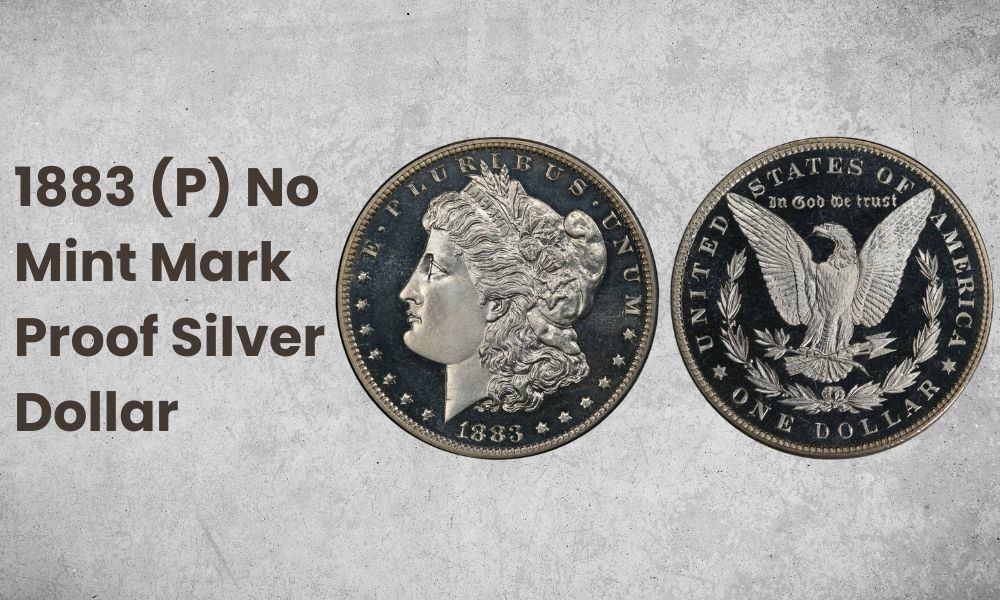
- Type: Morgan dollar
- Edge: Reeded
- Mint mark: None
- Place of minting: Philadelphia
- Year of minting: 1883
- Face value: $1
- $ price: $1,050 to $52,500
- Quantity produced: 1,039
- Designer: George T. Morgan
Proof coins use hand-selected planchets and are struck with special dies. Today, they’re produced in large numbers for collectors. But back in 1883, coin collecting was still a rare hobby.
The Philadelphia Mint facility struck just over 1,000 proof 1883 silver dollars for coin archives and other purposes. And if you want to get hold of one today, you can expect to pay a minimum of $1,050. That’s the value the PCGS places on a coin graded PR50.
That value more than doubles at PR60. And at PR66+, values enter five figures.
The finest proof 1883 silver dollars in existence are three coins graded PR68 and designated “cameos”. Cameos are coins with an attractive contrast between frosted designs and reflective fields. (You can also find deep cameos at some grades, where the contrast is particularly strong.)
The PCGS values each of those coins at $52,500.
Also Read: Top 21 Most Valuable 2000 P Sacagawea Dollar Coin Worth Money
History of the 1883 Silver Dollar
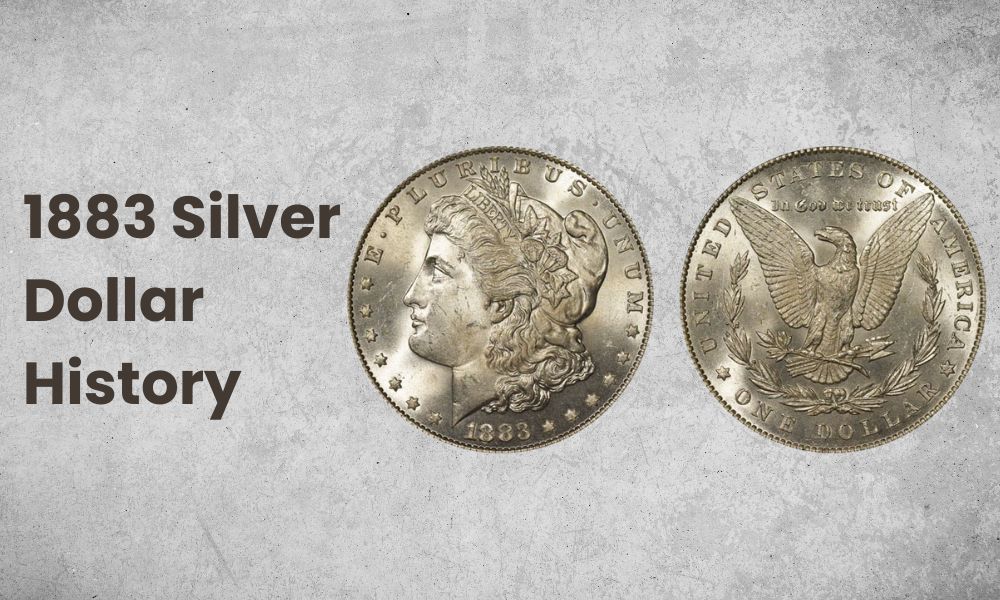
The dollar struck in 1883 was one of the series known as Morgan dollars, which first appeared in 1878. They take their nickname from their designer, George T. Morgan.
The coins were a response to lobbying from the mining industry, which was seeking a secure market for its silver. New legislation, the Bland-Allison Act, required the Mint to buy a set value of silver every month and turn it into coins.
The Mint was committed to spending between two and four million dollars a month on silver. That was enough to make a lot of coins – including the dollars minted in 1883. But not all of these were to survive.
As the First World War continued, the British were facing problems in India. German propaganda had seen Indians demanding their paper currency be exchanged for silver. More silver was urgently needed – and the British asked their allies, the US, for help.
In 1918, new legislation, the Pittman Act, was passed in response. It resulted in large numbers of silver coins being melted down. It’s estimated that only around 10% of the original mintage survived the cull.
Also Read: Top 19 Most Valuable Morgan Dollars Worth Money
1883 Silver Dollar Grading
Condition is key to coin value. Even a single point on the grading scale can make a big difference. So how do you know what grade your coin is?
One way is to find a coin that’s already been assessed by a reputable coin grading agency. You could also send it away for grading, although that will come with a fee.
1883 Silver Dollar Errors
1883 O Silver Dollar, Double Struck
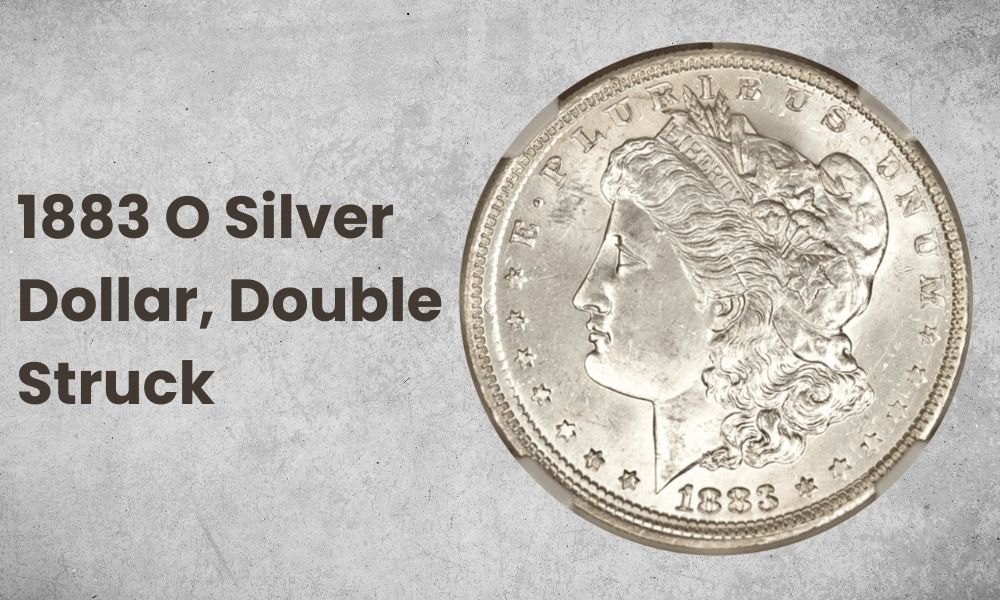
Very occasionally, coins are struck for a second time by the same die. That happened to one 1883 silver dollar struck in New Orleans. The evidence of the second strike was on the obverse, particularly noticeable on the date and the surrounding stars.
But the coin had been cleaned, which means that coin grading agencies wouldn’t give it a grade. It had, however, been certified as authentic by the PCGS. And despite the absence of a grading, it still sold at auction for over $1,000.
A second New Orleans dollar with the same error but graded MS63 DMPL sold for over $7,000.
1883 O Silver Dollar, Struck Off-Center
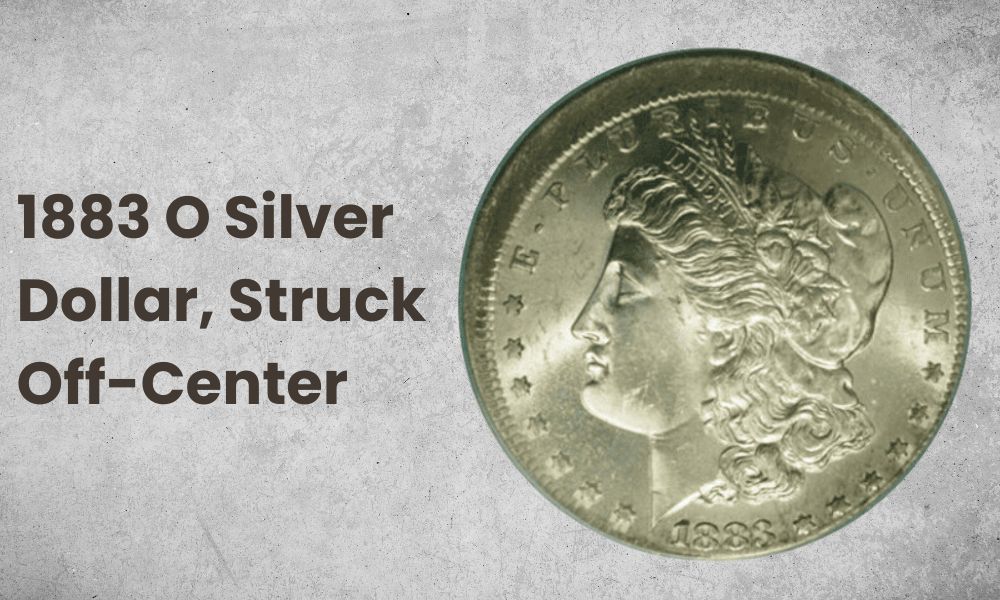
Another form of striking error is when a planchet is struck off-center. That was the case for an 1883 silver dollar, again struck in New Orleans.
The error wasn’t particularly extreme – the design was just 10% off. The coin was graded MS64 by the PCGS and sold at auction for $6,900.
1883 O Silver Dollar, Rotated Dies
When you flip a coin over, the design on one side should be orientated the same way as on the other. If it isn’t, the dies used to strike the coin have rotated out of position.
This error was found on another 1883 silver dollar from New Orleans. The coin wasn’t in the best condition, graded VF25. But even so, the error meant that it sold at auction for $120.
Take a look at this YouTube video from Couch Collectables to see all these error coins in detail.
FAQs
Where is the mint mark on an 1883 silver dollar?
Look for it on the reverse (the “tails” side). If there is a mint mark, it will be just above the “D” an “O” of “DOLLAR”. “CC” indicates Carson City, “S” San Francisco and “O” New Orleans. If there’s no mint mark, the coin was struck in Philadelphia.
How do I know if my 1883 silver dollar is real?
The simplest way is to get a coin that’s been certified by a reputable coin grading agency like the PCGS, NGC or ANACS. If you already own the coin, you could also send it to them for grading. Note, though, that there’s a fee for this, and it might not be worth paying for coins in poorer condition.
A simple test to help determine authenticity is to weigh your coin. It should weigh 26.73 grams, or slightly less if it’s very worn. If the weight is significantly different, the coin isn’t real.
